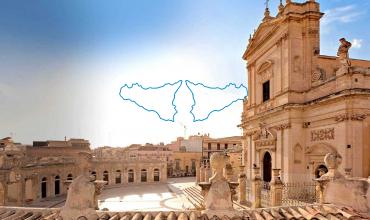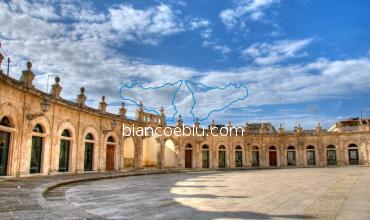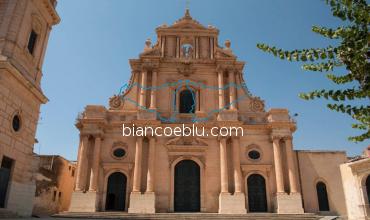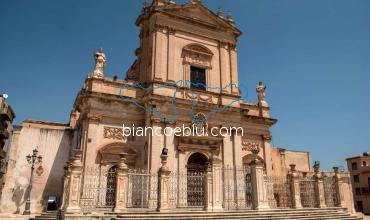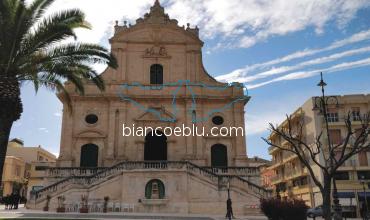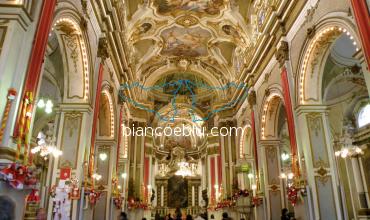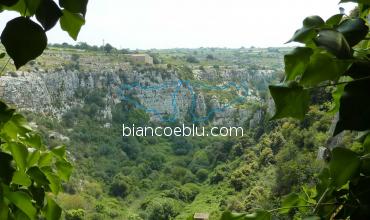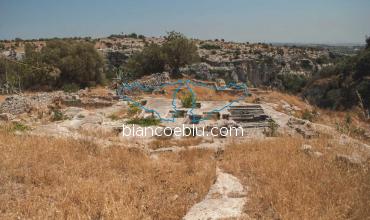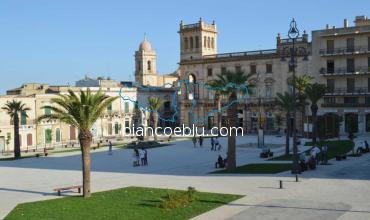- Information
- Map of Ispica
- Where to stay
- How to get there
- Beaches
- What to see
- Things to do
- Where to eat
Informations about Ispica
History about Ispica
Ispica today
MAP OF ISPICA
WHERE TO STAY IN ISPICA
HOW TO ARRIVE
Airports of Sicily
- Catania International Airport Fontanarossa: one of the most crowded airports in South
- Comiso Airport Pio la Torre di Comiso: Opened in 2013 it is in constant growth. It is operated by Ryanair, Alitalia, AirMalta, and Brussels Airlines.
- Palermo International Airport Falcone Borsellino is situated in Punta Raisi, about 35 km away from Palermo and it is the third airport of Italian South by passenger flows. There are train and bus services that connect Punta Raisi with Palermo.
- Trapani- Birgi Airport is more used as a military airport, yet at the same time it is a civil airport named after Vincenzo Florio where both Ryanair and Alitalia operate
By Ground Transport
By Car
- From Catania airport to Ispica: it is about 110 km away from Ispica, you have to take the E45 Catania–Siracusa until the Rosolini exit. Ispica is 8 kilometers west of Rosolini.
- From Comiso Airport to Ispica: it is 58 km away from Ispica, take the SP7 for Comiso, and take the SP115 which from Ragusa arrives in Modica where at the Sorda/Sampieri junction continue on the 115 towards Ispica. Estimated time 1h.
- From Palermo Airport to Ispica: it is about 333 km away from Ispica. Take the E19 PA-CT motorway and then the E45 Catania – Syracuse exit at Rosolini, and continue towards Ispica on state road 115.
- From Trapani airport to Ispica: it is about 413 km away from Ispica, it is advisable to rent a car and reach the Palermo-Catania-Syracuse up to Rosolini. Then take the state road 115 towards Ispica.
BEACHES IN ISPICA
The most populous seaside village of Ispica is Santa Maria del Focallo
, although there is more than one particularly beautiful beach in the Ispica area. So, we also find Marina di Marza, Punta Cirica, and Porto Ulisse.- SODA Thanks: strada provinciale 67 - tel. 331 4912457
- Lido Otello: strada provinciale 67 - tel. 0932 954329
- Lido Maracaibo: strada provinciale 67 - tel. 339 4843554
- Mare Nostro: Via Mediterraneo23 - tel. 0932 791111
- Paz Maya: strada provinciale 67 - tel. 339 1990817
Certainly, it is one of the most beautiful Sicilian beaches. The coves, caves, and cliffs open their guests a way to a paradise on Earth. Impressive are the stacks, strips of rock detached from the mainland, which rise in the middle of the sea with the unmistakable color that recalls that of the Sicilian Baroque of the Val di Noto.
- Marzà: lounge bar & relax- tel. 331 9907318
- Porto Ulisse Beach: strada provinciale 67- tel. 351 7307165
- Pozzallo: is around 11 km away.
- Marina di Modica: is around 21 km away.
- Sampieri: is around 25 km away.
- Costa di Carro: is around 26 km away.
- Cava d’Aliga: is around 29 km away.
- Donnalucata: is around 26 km away .
- Marina di Ragusa: is around 47 km away
- Isola delle Correnti: is around 23 km away.
- Portopalo di Capo Passero: is around 24 km away.
- Marzamemi: is around 21 km away.
- Vendicari: is around 27 km away.
- Calamosche: is around 30km away.
- Lido di Noto: is around 34 km away.
- Marina di Avola: is around 41 km away.
-
Fontane Bianche: is around 50 km away.
WHAT TO SEE IN ISPICA
.
Churches and historical palaces
- La Basilica e il Loggiato di Santa Maria Maggiore: Both were designed by the famous architect Vincenzo Sinatra, who made a lot to immortal the Baroque in the South-East of Sicily. The Basilica of Santa Maria Maggiore is decorated outside with Corinthian capitals and the color of the stone enhances the sober appearance of the church. Inside there is the classic structure with three naves. The Loggiato di Santa Maria Maggiore is also known as the Loggiato del Sinatra. It is a portico that leads into the church square, with a semi-elliptical shape. The only one in Sicily, it makes the place seem suspended between earth and sky, illuminated by the sun reflecting on the white stone. Cinema and television have repeatedly used this magnificent location as a set, especially in the TV series “Commissario Montalbano”.
- Chiesa Madre di San Bartolomeo: This religious structure was built after the earthquake in Val di Noto in 1693. The work was completed around the end of the 19th century, its interior consists of three naves supported by pillars of the Tuscan order. The facade presents a stunning blend of neo-baroque and neo-classical styles. Remarkable works of religious art are found inside the Chiesa Madre di S Bartolomeo.
- Basilica della Santissima Annunziata
- Chiesa Madonna del monte Carmelo
- Convento e Chiesa di Santa Maria del Gesù e dei Minori Osservanti di San Francesco
- Chiesa di San Giuseppe
Palaces of historical value in Ispica
- Palazzo Bruno di Belmonte: This building is an example of an Art Nouveau style, created in 1906 by Palermo’s architect Ernesto Basile, one of the most-rated European architects of his time. With the beginning of World War I, the construction works were stopped, later, for private reasons only part of them was finished. Since 1978 it has been the seat of the town hall of the municipality of Ispica and it is really worth a visit.
- Palazzo Bruno Modica: sober and imposing, this Victorian-style building dominates the Piazza della SS. Announced. Built between 1835 and 1845 it belonged to a noble family. This building too was chosen by the production of “Il Commissario Montalbano” and by many other film sets. Its main floor consists of 16 rooms in addition to the reception hall and services
Archaeological sites
Right here it is possible to see the man’s intervention to fortify the defense of the place. This territory is steeped in history centuries old. Here lived the Sicans, the Sicilians, and until 1693 Christian populations. Unmistakable deductions were made from the ruins, graffiti, and frescoes of saints found in the various caves, as indicated by the remains of the rock churches on the site.
Among the ruins of old settlements, you can also see the Church of the Annunziata and some parts of buildings such as stables and stables. Time for This place feels suspended. And as a witness of the distant past, every year, it becomes the ideal location to host one of the most popular living nativity scenes in Sicily. The renovations have been made to facilitate access for the disabled, a cafeteria on the site, the illuminated path for night visits and much more.
Also in this city of Eastern Sicily was set Divorzio all italiana with Marcello Mastroianni and Stefania Sandrelli. We also can’t fail to mention Vittorio De Sica who used Sinatra's villa to shoot his last film, Il Viaggio in 1974. Even Ficarra and Picone, famous Italian comic actors in Let's Go to hell filmed some scenes here.
THINGS TO DO IN ISPICA
- The feast of the Madonna del Carmelo is also an important one for the area and is usually celebrated on the 16th of July.
- One more event that attracts visitors to the city is the living nativity scene set up in the Cava d'Ispica during the Christmas period.
- Of all the festivals, one cannot fail to mention Carotispica, the one dedicated to the main product of Ispica’s agriculture: the PGI novella carrot.
- The same value has also another event that promotes the food and wine traditions of the area, which is the Sicilian Food Fest.
What to visit near Ispica
- Ragusa: is 40 km away.
- Scicli: is 24 km away.
- Marina di Ragusa: is 45 km away.
- Pozzallo: is 10 km away.
- Noto: is 22 km away.
- Marzamemi: is 24 km away.
- Portopalo di Capo Passero: is 28 km away.
-
Siracusa: is 57 km away.
- Enna: is 180 km away.
- Caltagirone: is 91 km away.
- Piazza Armerina: is 122 km away.
- Acireale: is 131 km away.
- Giarre: is 139 km away.
- Taormina: is 164 km away.
Where to EAT
- Ristorante A Maidda corso Garibaldi 14- 0932 1855833
- Ristorante Il Giardino dei Sapori via Emilia 24- 0932 959323
- Ristorante Pizzeria La Giara corso Garibaldi 14/18- 0932 793218
-
Pizzeria Il Tempio corso Umberto I 541-0932 951560
- Panineria Creperia Spizuliamu piazza SS. Annunziata 13- 334 1869840
-
Panineria Creperia Da Giorgio piazza dell’Unità d’Italia 7- 339 8653930
